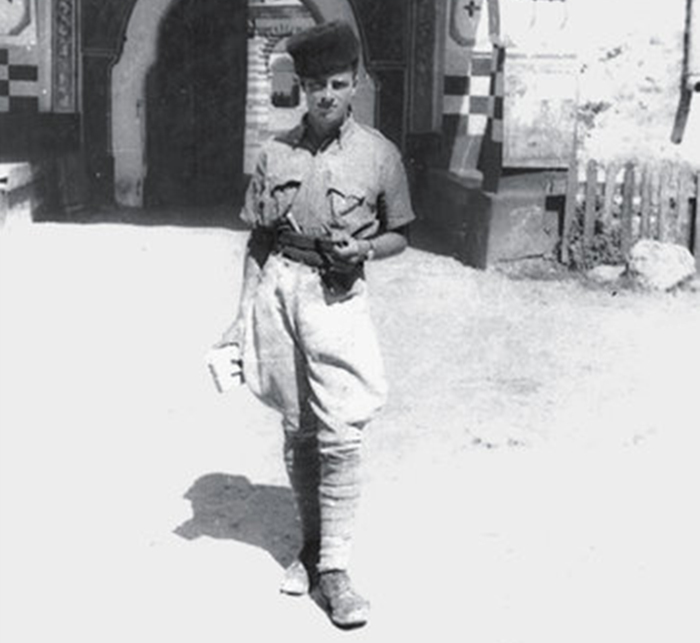Travel by foot leaves an imprint on the memory, and slows down time for a precious moment.
To read a book about the pleasures, epiphanies and mettlesome feats someone has accumulated over the course of an incredibly long walk is to be fascinated, jealous and, most of all, incredulous. Who has time to walk, in this overscheduled age? I always seem to be running, not walking, whenever I happen to be at large on two feet, suffused with a cold-sweat adrenaline panic that I’ll be late to whatever the next vital thing is, miss the train, the flight, the crucial email, the fateful encounter or just closing time at the grocery store. It’s one thing to distractedly click on an Instagram photo or a Facebook note a friend has posted of a breathtaking scene or enviable meal he’s scored on a far-flung holiday; that doesn’t jolt us from our harried workday routines. We absorb them half-consciously before checking Twitter, then return dutifully to our inboxes. The literature of walking shakes us out of this world set on whir, nudging us into a parallel universe where days are measured not by the messages on the screen, but by the rising and setting of the sun.
Both consolation and inspiration can come from reading the unrushed accounts of observant souls who found a way to live, for a while, in slow motion; on the other hand, those satisfactions are mingled with the mournful recognition that most of us who read these books — and there are so many of them — will never manage to do what their authors did: to slow down and lead a proper, examined human life in the manner of the togaed philosophers, drinking in the natural world and nursing introspective reveries footfall by footfall. Envy kicks in at the thought that anyone, in any era, had the luxury of detaching himself from the daily grind for weeks, months, even years at a time. Are long-distance walkers more antisocial than most people? More enlightened? Or are they just luckier?
In 1988, at the age of 50, the explorer Helen Thayer walked alone (if you don’t count her husky dog, Charlie) to the magnetic North Pole, and wrote about it in a book called “Polar Dream.” Thirteen years on, not remotely walked-out, she traversed the Mongolian desert, having prepped for the ordeal by trudging across Death Valley (200 miles) and the Sahara (4,000 miles). What induced her to subject herself to this effortful form of hooky? In “Walking the Gobi: A 1,600-Mile Trek Across a Desert of Hope and Despair,” she explained, “I yearned to test myself, to push myself to the limit, and to associate with little-known cultures.”
There’s a more accessible and beguiling charm to be found, I believe, in the variety of walkalogues, written by casual rovers — call them ambulatory amateurs — whose purpose is idiosyncratic, whose rules are loose and who make you feel you could retrace their steps. Ever since Bill Bryson grudgingly trod the Appalachian Trail in 1996 for as long as he could stand it, and wrote about it in “A Walk in the Woods,” I’ve toyed with the idea of bumbling through a bit of that trail, encouraged by the knowledge that giving up is allowed.
But when I read Graham Greene’s 1936 book, “Journey Without Maps,” about his monthlong walk through the uncharted African country of Liberia, I was so enthralled that I boarded a flight to Ghana and embarked on a walking journey of my own. I published an article or two about it, but never, to my shame, wrote about the most indelible leg of that trip — a detour to track the “Predatory Beast of Penkwasi,” whose rampages had occupied the front pages of Ghanaian newspapers during my visit. Even now, when I close my eyes, that expedition, made nearly 20 years ago, unspools in vivid color in my mind. It’s as if every step I took had engraved each unfamiliar sight and taste, each interaction with a stranger I’d never see again, onto a reel of memory that cannot be eroded.
Source: New York Times Magazine
April 29, 2014
By Liesl Schillinger, photo by Patrick Leigh Fermor Papers, John Murray Archive, the National Library of Scotland
http://tmagazine.blogs.nytimes.com/2014/04/29/walk-dont-run-graham-greene-thoreau-rory-stewart-paddy-fermor/?_php=true&_type=blogs&_r=0











